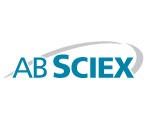Application note: Peptide/protein quantification with SCIEX separations

Eksigent ekspert™ nanoLC 400 System
Typically, high end mass spectrometers are used to perform non-targeted discovery experiments where the goal is to quantitatively profile large numbers of proteins across small numbers of samples to find protein targets (blue). In the next phase, this subset of proteins is analyzed across a larger set of samples. The outcome of this verification step (green) is hopefully a small subset of very promising protein markers that are then taken forward to perform large scale validation across a much larger sample size (orange), in hopes to find a small panel that provides the desired read-out.
While much focus has been on the mass spectrometry innovations, the importance of the separation component for getting the highest quality data cannot be underestimated. The sensitivity, robustness and throughput of the LC strategy must also evolve as research progresses through the pipeline. The nanoflow regime is used extensively for high sensitivity discovery experiments but more recently life science researchers are exploring the use of the microflow regime for increased throughput and robustness for quantification. The sensitivity differences between nano and micro flow rates are explored here with the goal of establishing general sensitivity guidelines.

